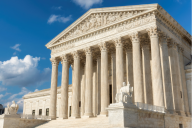You have /5 articles left.
Sign up for a free account or log in.
How might we prepare better schoolteachers?
For over a century, colleges and universities have asked this question with varying levels of interest and commitment. Some have also asked questions more foundational.
Can teaching be taught? Or are some teachers just born with “the gift” -- an inherent ability to connect with young people and inspire learning? Should we devote resources to training teachers? Or should we simply encourage public policies that identify undergraduates who already posses the knack for teaching?
President Obama has ordered his administration to take up similar questions. Recognizing that “recruiting, preparing, developing and supporting great teachers has a direct impact on the learning and success of America’s students,” the Department of Education will issue new rules this summer for programs that train teachers.
Unlike the emerging debate over the Common Core, however, this pivotal moment to shape what gets valued in classroom instruction will draw limited attention. A relatively small subset of policy makers, K-12 interest groups, and schools of education will wrangle over the new guidelines.
And a stakeholder once central to these discussions, faculty members in colleges of liberal arts and sciences, will again be missing from an important democratic conversation.
This renewed attention to teacher preparation is, nonetheless, significant. As the White House explained, “There is no more important factor in successful schools than having a great teacher in every classroom.”
Until now, the President and Secretary of Education Arne Duncan have pursued this goal indirectly as part of a multi-faceted, bi-partisan education reform agenda that garners support from key business interests. Obama administration policies have encouraged competition, promoted merit pay, challenged tenure practices, demanded tougher performance measures, and required teachers to prove their instruction is tied to “college and career readiness” goals.
After years of qualified support, some schools of education and teacher unions are pushing back against this accountability agenda. Many will likely object to any proposed guidelines that retroactively connect student test scores to the preparation their teachers received years earlier. But these stakeholders will offer few significant alternatives to address the enduring criticism that the teaching profession draws from lower performing college graduates and benefits little from a surfeit of undemanding credentialing programs.
By remaining largely silent for so long, colleges of liberal arts and sciences have contributed to these developments. By pushing big questions about K-12 teaching to the margins and assigning them solely to education specialists, institutions of higher education became complicit in trends that continue to make public education more separate and more unequal.
Rather than standing on the sidelines as these debates are resurrected this summer, faculty members in the arts, sciences and humanities should offer expert testimony. Federal policy on teacher quality directly impacts the quality of students enrolling in our institutions of higher education and ultimately shapes whether the best college graduates consider teaching as a viable and meaningful career.
We can draw some lessons from the past.
When number-crunching industrialists tried to impose new purposes and teaching practices on the late 19th-century high school, the most vocal opposition came from professors of literature, history, mathematics, philosophy, physics, biology, and art. This liberal arts defense of teaching was loudest in the Midwest.
As early as 1879, University of Michigan President James B. Angell reminded institutions of higher education of their crucial role “apprising the public that teaching is itself an art.” Michigan faculty, with appointments in the College of Literature, Science, and the Arts, spent the remainder of the century visiting schools, experimenting with new courses, and identifying a modest place for “pedagogics” in the curriculum.
More significantly, these scholars joined peers at Northwestern, Berkeley, Columbia, Harvard, and elsewhere to actively champion state credentialing policies that elevated the importance of preparing teachers with subject-matter expertise. On campus, this broad-based faculty effort led to conferences on teaching, new faculty-alumni networks, and the formation of clubs that openly discussed how this subject matter might best be taught.
But over time this tight connection between the liberal arts and teacher preparation practices fractured. As historians ranging from Frederick Rudolph to Larry Cuban have shown, the 20th-century university became distracted by new purposes and research imperatives. The emergent field of “Teacher Education” soon separated itself from the liberal arts by promoting an increasingly technical conception of teaching. New credentialing expectations were established, not through campuswide collaboration, but by specialists who believed educational science could isolate and measure the constituent parts of good teaching. By World War I, semi-autonomous departments of education had effectively replaced the chairs of pedagogy that were once positioned firmly within the arts and sciences.
This history is relevant today and helps explain a century-long cycle of diminished instruction in American education. Without a professional core of teachers who are versed in the humanities and steeped in the great questions of science, schools are especially vulnerable to forces that reduce teaching to a series of discrete measurable acts. Yet the more teaching is dissected, the less attractive the profession becomes for graduates who might otherwise consider it a viable and meaningful career option.
More directly, these reductionist policy trends obscure something that humanists care deeply about -- the enduring beauty of teaching and learning. As one outgoing pedagogy chair lamented in 1900, “the attempt to mechanize instruction is part of the monstrous error that free minds can be coerced; it has really the same root as religious persecution.”
By remaining largely silent for so long, colleges of liberal arts and sciences have contributed to these developments. By pushing big questions about K-12 teaching to the margins and assigning them solely to education specialists, institutions of higher education became complicit in trends that continue to make public education more separate and more unequal.
This silence has had a disproportionately negative impact in poorer urban communities. The type of liberally educated teacher who once commonly taught in economically diverse public schools now migrates toward private institutions or to affluent suburbs. Meanwhile, policies that emphasize vocational “readiness” — at the expense of curiosity, creativity, and critical thinking — communicate a dispiriting message of doubt to disadvantaged students who might benefit most from these educational virtues.
This same policy landscape discourages bright, service-minded college graduates from considering teaching as a meaningful lifelong pursuit. Even Teach for America, which has notably placed thousands of teachers in urban classrooms, is increasingly viewed as a steppingstone or worse. Many of its more insightful and talented recruits quickly leave teaching for careers that more readily reward their capacity for independent thought and imagination.
This vocational pattern has drawn far too little attention. And, not coincidentally, a profession that once mitigated inequality now increasingly reflects it.
What can we do to push back against these trends?
First and foremost, professors in the liberal arts need to get back into public school classrooms. Visiting schools and even observing our own former students teaching is not difficult to arrange. Even these modest experiences could profoundly alter our understanding of how much choice, accountability, and testing have shifted the instructional landscape since our own high school days.
Secondly, colleges of the liberal arts need to do more in staking a claim to teacher education and, like our 19th-century predecessors, invite teachers, principals, and superintendents to campus for open conversations about what we all value when hiring teachers.
Third, we can accept that these bridge-building activities can produce expertise and authority. With this new legitimacy -- armed with insight on the ways professional expectations can dehumanize teaching -- we can demand a seat at the table the next time local, state, or federal policy makers meet to make consequential decisions.
Our current ignorance of classroom practice leaves us vulnerable to a powerful media message that repeatedly demeans teachers. Time spent in schools disrupts this narrative and could remind us what masterful teachers continue to do.
They teach for understanding. They encourage and support students with the knowledge that learning can be uneven, contradictory, and even frustrating. They demand deeper thinking, applaud passion, reward accuracy, tap curiosity, and otherwise help students discover the inherent human need to solve problems and experience beauty.
Such noble learning pursuits have long been the domain of the liberal arts and humanities. These fields best reward our creativity, connect us to others, and offer standards for excellence. And they also show us how to handle ambiguity, face disappointment, and recover from failure.
As such, there is a growing understanding that the arts and humanities may offer teachers the most important instruction our children need to address a future only they can imagine.
In this light, we need not agree on whether good teachers are born or made. But if we want committed teachers who ask big questions, model open inquiry, and honor a young person’s mind, college faculty in the liberal arts will need to speak up and properly accept their historical role as teacher educators.
A generation of college students is ready think more holistically about preparatory programs that, like teaching, can be interesting, dynamic, demanding, and meaningful. And they will need a big campus to discover why teaching is, by any good measure, a career worthy of their thinking.








